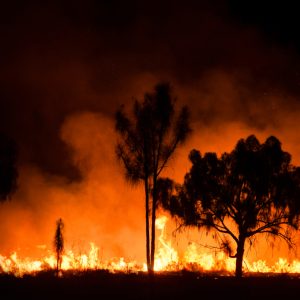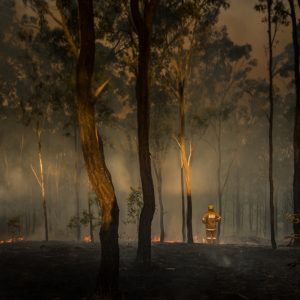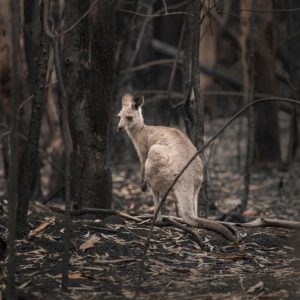The 2019-20 Australian bushfire season happens to be a series of wildfires that have wreaked havoc in Australia, especially in the southeastern part of the country. The intensity of the current bushfire season has been comparatively much larger than the previous times. It has burned down whatever has come in its path and throughout almost 41,000 square miles, it’s absolute mayhem.
The widespread bushfire has destroyed more than 5900 buildings, and according to reports from January 2, 2020, 28 people have already lost their lives. The current bushfire season, as being considered by the NSW Rural Fire Service, is the worst in history. Ecologists are apprehensive that a few endangered species will be facing extinction.
Everything In Sight Turned To Ashes

In a video that has been recently posted on Twitter, a man is seen driving into the New South Wales town of Batlow that has been completely burnt into ashes. There is ash and lingering smoke on both sides of the road. Littered hither and thither are the remains of the animals which lost their lives in the wildfire that has set the region ablaze. From homes to an entire town, everything has been turned into ashes. If the reports are taken into account, almost 18 million acres of land has gone up in flames. This is nothing short of a disaster and it will take years for life to make a comeback. The national parks, forests, and bushland that are home to the unique wildlife that the country boasts of are lost. Nothing can be more unfortunate than this.
Half A Billion Animals Have Been Affected

Almost half a billion animals have been reeling under the effect of the bushfire in New South Wales and millions have been recorded dead. Mammals, reptiles, and birds have succumbed. The true number has not yet been calculated, but according to the ecologists from the University of Sydney, the total estimation across the country can be much higher than what’s being guessed. Fires are not something which hasn’t happened in Australia before. However, the intensity of these wildfires is increasing manifold with time and that’s indeed a case of worry. The destruction that has been taking place over the years has posed a huge problem. The effects of the bushfires have been accentuated by the recent changes in climate.
A Bushfire Of Unprecedented Proportion

Australia, as reports suggest, boasts of the highest species loss as compared to any other country, and researchers reveal that that rate might be on the rise if this disaster doesn’t cease. The scale of this bushfire has been absolutely unexpected and has put everyone in shock. The concerns that are being raised are substantial and logical. Questions are being asked over the capacity of these ecosystems to rebound from the fires. In fact, 12.1 million acres of land have been destroyed by the bushfire this season. There is simply no effective way to calculate the number of casualties until the fire dies down. But, as things are slowly turning out, the loss is most likely to cross the 480 million mark.
Koalas And Kangaroos Have Suffered The Most

Among Australia’s diverse wildlife, koalas and kangaroos have suffered the most in this tragedy. Almost one-third of the koalas in New South Wales have succumbed to the destruction and almost one-third of their habitat has been thoroughly devastated. Photos that are doing the rounds show koalas with blistered paws, singed fur, and burnt flesh. Although efforts are on to rescue and treat them with proper care, chances of their survival are feeble. The marsupials are known to be small in size and stubby-legged and hence, they can’t run very fast. As a result, the koalas are at maximum risk to get engulfed by the flames.
Other species don’t succumb to the flames or smoke, but from the mayhem that this bushfire causes. The smaller reptiles and mammals can escape the fire by making burrows underground or hiding underneath the rocks. However, after some time, they face a shortage of both food and shelter. Koalas, as well as kangaroos, are actually spread across the landscape of Australia. Therefore, the danger of them getting extinct is not on the cards. That’s the only positive part of the entire devastation. The recovery of the animals not only depends on the size of the population but also on the changes in climate and the condition of their habitat. With that being said, the climate crisis is the most devastating factor.





